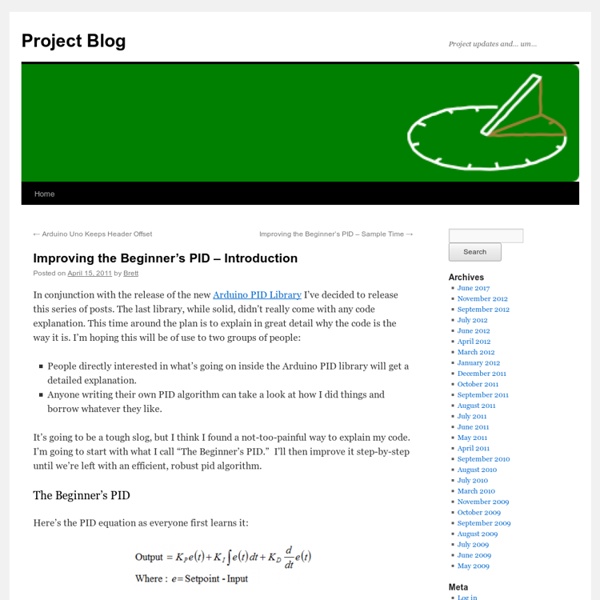



Linear Actuator - PID Control A linear actuator is a motor that has been geared to extend and contract an arm rather than rotate a shaft. Many applications that use linear actuators require precise position control, but since DC motors can ordinarily only be told how fast to go (on a scale from -100% and 100% duty cycle) you need to program a control system. In order to make a control system, you'll need a linear actuator that has a built-in feedback device such a as a potentiometer. Introduction This application guide is designed to explain the basics of PID control and how to implement a basic control loop using Phidgets. Phidgets The following setup was used to build this application guide: You could use the 1064_1 - PhidgetMotorControl HC instead, but it doesn't have an analog input for the feedback device, so you'd also need to use a device with an analog input and change the program accordingly in this case. PID Control Basics Proportional Control Integral Control Derivative Control Sample Program ActuatorPID Algorithm
BEST_PID_POSITION_EXAMPLE Published by: ober on June 22, 2012. By Kong Wai Weng RH2T Mag, Vol.4, Mar 2010 PID control system is one of the most mature and commonly used control strategies in the industrial for decades thanks to its simple but effective algorithm. In this article, we will discuss the basic concept of PID controller and how to implement it in the embedded system. Introduction Closed loop control system is an essential topic for embedded systems, bringing together actuators and sensors with the control algorithm in software. Besides speed control, PID control system can also be used to control other parameters such as position, temperature, water level, stability, etc. The Problem – DC Motor Position Control. Before we begin to design a PID controller, we need to understand the problem. We want to move the output shaft of the motor from current position to target position There are a few terms commonly used to describe the PID control loops, such as: The Hardware – PR24 The Implementation of PID Controller
PID EQUATIONS IN A SINGLE PICTURE AN_IDIOT'S_GUIDE_TO_PID_ALGORITHM PID_CAR_EXAMPLE_FOR_POSITION_FEEDBACK PID_SPING_EXAMPLE_FOR_FORCE_FEEDBACK A_GOOD_EXPLANATION_ABOUT_PID